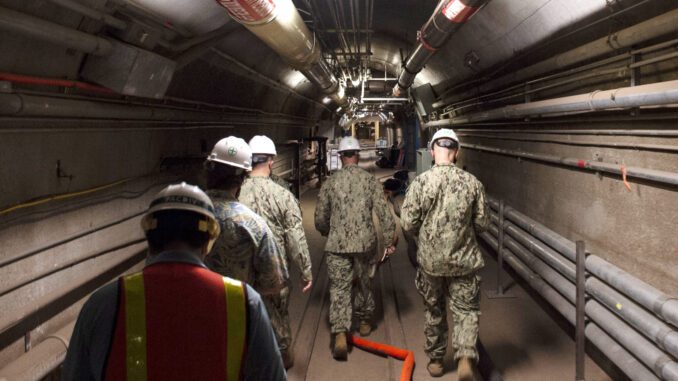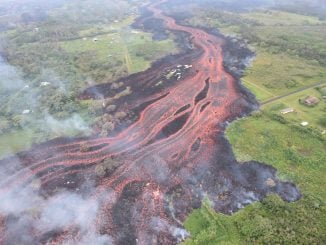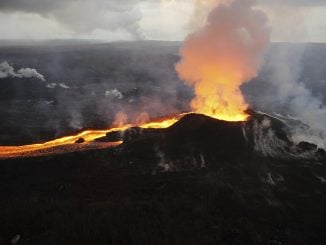
WASHINGTON, D.C. — The Defense Department will permanently shut down the Navy’s massive fuel tank facility in Hawaii that leaked petroleum into Pearl Harbor’s tap water, and will remove all the fuel, the Pentagon said Monday.
Pentagon press secretary John Kirby said the decision by Defense Secretary Lloyd Austin is based on a new Pentagon assessment, but also is in line with an order from Hawaii’s Department of Health to drain fuel from the tanks at the Red Hill Bulk Fuel Storage Facility.
The tanks, built into the side of a mountain during World War II to protect them from enemy attack, had leaked into a drinking water well and contaminated water at Pearl Harbor homes and offices.
Nearly 6,000 people, mostly those living in military housing at or near Joint Base Pearl Harbor-Hickam were sickened, seeking treatment for nausea, headaches, rashes and other ailments. And 4,000 military families were forced out of their homes and are in hotels.
Lauren Wright remembers her skin peeling, feeling nauseous and vomiting. Her symptoms disappeared only when she stopped drinking, showering and washing dishes with her home’s water.
Since early December, Wright, her sailor husband and their three children ages 7 to 17 have been among the thousands of military families living in Honolulu hotels paid for by the Navy so they can have clean water.
“I am happy because it is a step in the right direction. It should have happened a long time ago,” Wright said. “Hopefully, they don’t drag their feet and it moves quickly so another spill or leak doesn’t happen again.”
She said her water at home still has a sheen and smell. The Wright family hopes to find a new home and said she and her family won’t be drinking the water, even after officials sign off on its safety.
Austin spoke with Hawaii government leaders on Monday to inform them of the decision, which he said will protect the population and the environment, and will also lay the groundwork for a more secure military fueling system.
“This is the right thing to do,” Austin said in a statement. “Centrally-located bulk fuel storage of this magnitude likely made sense in 1943, when Red Hill was built. And Red Hill has served our armed forces well for many decades. But it makes a lot less sense now.”
The Pentagon said it will move to a more dispersed fueling system for military ships and aircraft in the Indo-Pacific. Based on the new assessment, the expanded system will be more cost effective and provide greater security by spreading the fuel supply more broadly across the region.
The new plan, laid out in recommendations delivered to Austin by a study group, would increase the fuel contracts that the U.S. has with other territories and nations in the Indo-Pacific, and add several more tanker ships that are based at sea. There are currently less than a dozen tanker ships, so several more would have to be built.
After the facility can operate again, the defueling will begin and the process is expected to take about a year, meaning it would be finished some time next year. Austin has asked the Navy secretary to plan a budget for all necessary corrective action for any prior fuel releases from the facility.
Austin said the department will also work with state, national and local leaders to clean up the contamination and consider other uses for the property after the fueling plant is closed. And the military will also provide health care to the families and workers affected.
The tanks can hold 250 million gallons of fuel, and they are at less than half capacity right now. Officials said that 13 of the 20 tanks have fuel in them, two are permanently closed and five are being repaired.
The Navy hasn’t determined how the petroleum got in the water. Officials are investigating a theory that jet fuel spilled from a ruptured pipe last May and somehow entered a fire suppression system drain pipe. They suspect fuel then leaked from the second pipe on Nov. 20, sending it into the drinking water well.
Weeks after the leak was discovered, Hawaii state officials and members of Congress began to demand the shutdown of the facility.
The Navy in early February appealed the state’s closure order, and at the time Deputy Defense Secretary Kathleen Hicks said the appeal would give the military time “to make evidence-based and transparent decisions.”
Kirby on Monday said the department realizes the closure of the fuel complex will not be a quick fix.
“We have work to do,” he said. “But we do believe that this decision by the Secretary today marks a significant first step in the path forward.”



